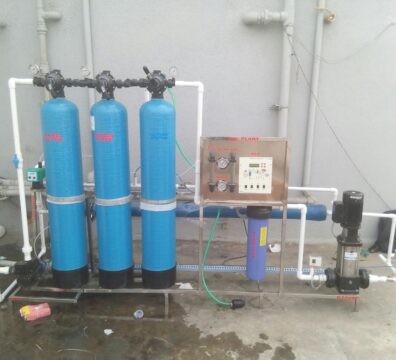
Water Softner
Hard water contains a lot of magnesium and calcium which makes our skin and hair hard, soaps and shampoos have less foaming scaling on bathroom washing machine and geyser and floor and Causes many problems like scaling in pipe fittings.
The resulting soft water requires less soap for the same cleaning effort, as soap is not wasted bonding with calcium ions. Soft water also extends the lifetime of plumbing by reducing or eliminating scale build-up in pipes and fittings. Water softening is usually achieved using lime softening or ion-exchange resign but is increasingly being accomplished using Nanofiltration.
To avoid this, you should bring a water softener home and make sure that you and your family do not face any problems related to water.

Water Softner in India
A water softener is a device that removes the minerals that cause water hardness, such as calcium and magnesium ions, from water. Hard water can cause problems such as scale buildup in pipes and appliances, reduced effectiveness of soaps and detergents, and increased energy costs due to the reduced efficiency of water heaters and other appliances.
Water softeners work by using a process called ion exchange. The water is passed through a bed of resin beads, which are coated with sodium ions. The calcium and magnesium ions in the water are exchanged for the sodium ions on the resin beads, effectively removing them from the water.
When the resin beads become saturated with calcium and magnesium ions, the water softener initiates a regeneration cycle. During this process, a brine solution (a concentrated solution of sodium chloride) is used to flush the resin beads and replace the calcium and magnesium ions with sodium ions. The brine solution and the removed minerals are then flushed out of the softener and into a drain.
There are several different types of water softeners, including timer-based, demand-initiated regeneration (DIR), and twin-tank systems. Timer-based systems regenerate the resin beads at set intervals, regardless of the actual amount of water used. DIR systems measure the amount of water used and initiate regeneration only when necessary, which can reduce salt and water consumption. Twin-tank systems use two tanks of resin beads, allowing one tank to be used while the other regenerates, ensuring that softened water is always available.
In summary, water softeners are devices that remove the minerals that cause water hardness, such as calcium and magnesium ions, from water. They work using a process called ion exchange and come in different types, including timer-based, demand-initiated regeneration (DIR), and twin-tank systems.
